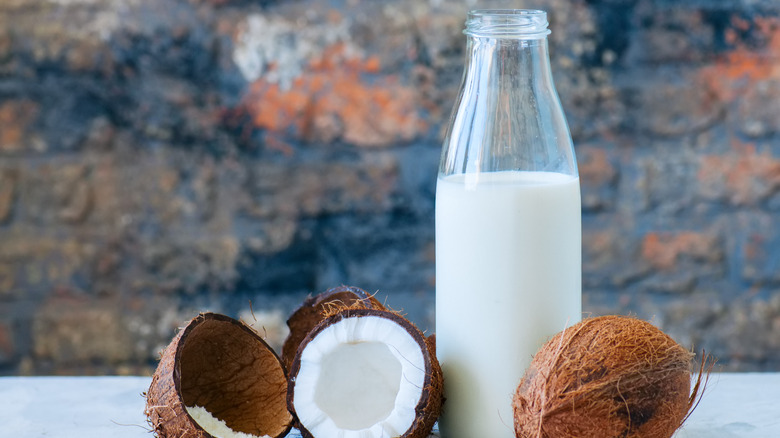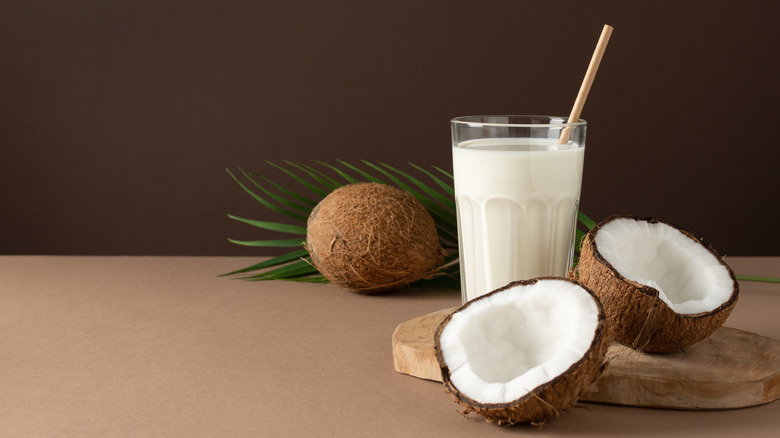How Is Coconut Milk Actually Made?
Those of us who grew up in Southeast Asia might remember the task of making coconut milk as beginning with a lethal-looking bench with a sharp, rounded blade on one end. This bench– which the Thais call "mah kroot maprow," per Temple of Thai, and the Filipinos call "kudkuran" or a "kudkuran ng niyog," per Tagalonglang – is a "unitasker" because it had just one job: To coax the flesh out of older, hardened coconut from which its milk and cream is extracted.
To get that flesh, a coconut is cracked in half, and its insides would then be rubbed against the sharp blade until the coconut meat fell away from the husk into a bowl or basin positioned beneath. Coconut milk can then be made first by collecting the grated coconut and then adding a half cup of hot water to that at a ratio of one-half cup of hot water for every grated coconut. The mixture is then be left to cool slightly, before the mass would be massaged by hand. The coconutty pulp is then laid into a piece of cheesecloth and then squeezed to extract the milk, per Pinoy Food Guide. Filipinos call the first extraction "kakakng gata" or coconut cream, and the second press, "gata" or coconut milk, per Yummy.
Coconut milk can still be made at home
While most people wouldn't have access to a grating bench, making coconut milk at home isn't as challenging as it might seem, particularly if you have access to mature fresh coconuts or unsweetened coconut flakes, a good blender, and a strainer or a piece of cheesecloth, per MasterClass.
When using fresh coconut, Alpha Foodie recommends you first freeze the coconut, then crack the nut open with a hammer which will cause the meat to fall away from the shell. A vegetable peeler can help remove the brown skin from the white meat, and then the coconut can be grated or shredded.
To make the milk, MasterClass suggests mixing shredded coconut and hot water in a ratio of eight ounces of coconut to four cups of hot water. After the mixture has cooled to room temperature, use a food processor or blender to break down the coconut flesh, then pour the pulpy mass into a nut bag or cheesecloth over a strainer and massage until you've extracted as much of the liquid as possible. The leftover meal can either be discarded, or dried and used as coconut flour. Coconut milk can then be seasoned with salt to taste.
While Pinoy Food Guide says the milk is best when used immediately, MasterClass says it can be stored in airtight containers for up to five days.

